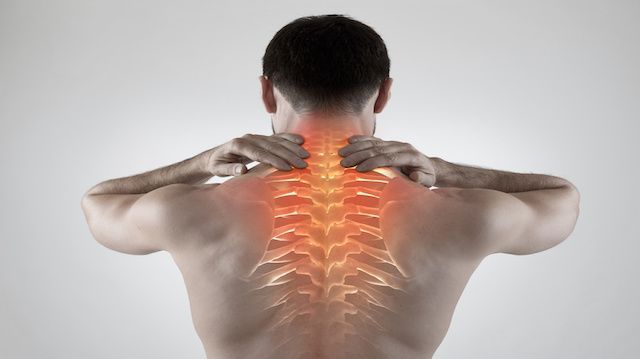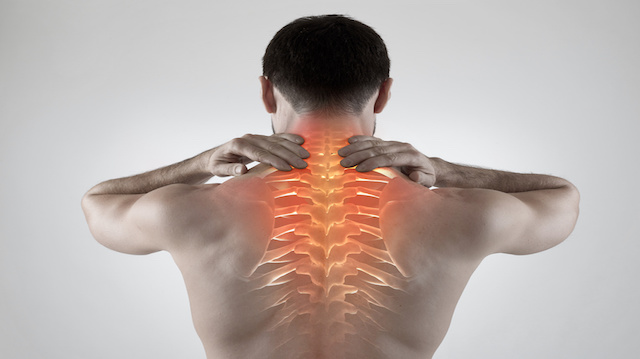
Back pain affects an estimated 80 percent of Americans at one time or another. Although many accept this pain as an inevitable part of aging, recent cross-cultural research challenges this paradigm. In fact, back pain may be a uniquely Western — and modern — phenomenon. Here’s what we’ve learned about back pain from cultures that don’t experience it.
The research
We’ve learned a lot about why people experience back pain from the research of acupuncturist Esther Gokhale, who, according to NPR, began experiencing back pain around 20 years ago. After discovering she had a herniated disc, Gokhale had surgery to fix it. But when she experienced the same injury again a year later, she decided to skip the surgery in favor of finding a more permanent fix for her pain. Her idea was to “go to populations where they don’t have these huge problems and see what they’re doing.”
She visited places like the mountains in Ecuador and tiny villages in Africa, where she watched people live and work. She observed people carry buckets of water on their head, collect firewood, and bend over while collecting chestnuts for hours at a time. Somehow, despite all of this intense, manual labor, these people did not experience back pain.
The “S” vs. the “J”
What they all had in common, she eventually realized, was the shape of their spine. American spines, she discovered, are often “S” shaped, while members of cultures that don’t experience back pain have spines shaped like a “J.”
The typical S-shaped spine curves both at the top, along the back of the neck, as well as at the bottom, along the lower back. A person with a J-shaped spine, on the other hand, has a back that is almost flat until the bottom, where it curves dramatically at the top of the buttocks. “The J-shaped spine is what you see in Greek statues. It’s what you see in young children. It’s a good design.” Gokhale told NPR.
So how can we get that J-shaped spine?
After reshaping her own spine into a J shape, Gokhale developed exercises so that others could also change their posture and discover a pain-free back. She recommends doing the following four exercises, which you can practice when you’re standing, walking, or sitting.
Roll your shoulders back
Those of us who work in offices or spend a lot of time sitting tend to hunch our shoulders forward, so that our arms hang in front of our bodies instead of alongside it. To fix this tendency, Gokhale recommends raising your shoulders up, pushing them back, and then letting them drop back down again. This should allow your arms to rest at your side, and your thumbs to point out away from you.
Lengthen your spine
As you take a deep inhalation, try to lengthen your spine, so that you’re taller than you were before the breath. As you exhale, try to maintain this new height. Then when you inhale again, try to lengthen even more. Gokhale points out that this is a great exercise for strengthening your core muscles, which support your spine.
Squeeze your glutes
 The gluteus medius, which are the muscles right at the top of your buttocks, provide support to the lower back. Gokhale suggests strengthening these muscles by practicing squeezing your butt cheeks every time you take a step.
The gluteus medius, which are the muscles right at the top of your buttocks, provide support to the lower back. Gokhale suggests strengthening these muscles by practicing squeezing your butt cheeks every time you take a step.
Adjust the angle of your chin
Rather than lifting our chins, we should actually be keeping them relaxed, and slightly angled down. Gokhale recommends finding this balance by putting a light object on the crown of your head, and practicing pushing up against it. This also allows you to lengthen the back of your neck.
Other ways to reduce back pain:
- Certain yoga poses and pilates moves can help with chronic back pain as well as conditions like sciatica, which can contribute to back pain.
- Practicing mindfulness has also been shown to help reduce chronic pain, as well as lower your risk of future injuries.
- There are many other ways we can take care of our spine throughout the day, while we’re sitting, standing, working, exercising — even sleeping! Find out how, here.
- Losing weight can also be helpful for some people, as being overweight can place stress on the spine and contribute to the development of an unnatural, S-shaped spine.
- Get moving! A sedentary lifestyle increases one’s risk of back pain by decreasing muscle tone in the body. Less muscle means more pressure on the spine.
Many people feel as if they don’t have any options once chronic back pain develops. But, as Gokhale’s experience shows, it is possible to reduce your pain through simple exercises. And even if you don’t experience back pain, over time, Gokhale’s exercises help develop better posture, a stronger core, and a perkier butt. Worth trying, don’t you think?
–Teresa Manring
Teresa is a freelance writer and yoga teacher currently living in Sri Lanka. She loves to write about policies, ideas, and practices that promote a healthy planet and create healthy people.
Sources:
http://www.npr.org/sections/goatsandsoda/2015/06/08/412314701/lost-posture-why-indigenous-cultures-dont-have-back-pain
http://hraf.yale.edu/a-cross-cultural-look-at-posture-in-ehraf
http://gokhalemethod.com/gokhale-method

